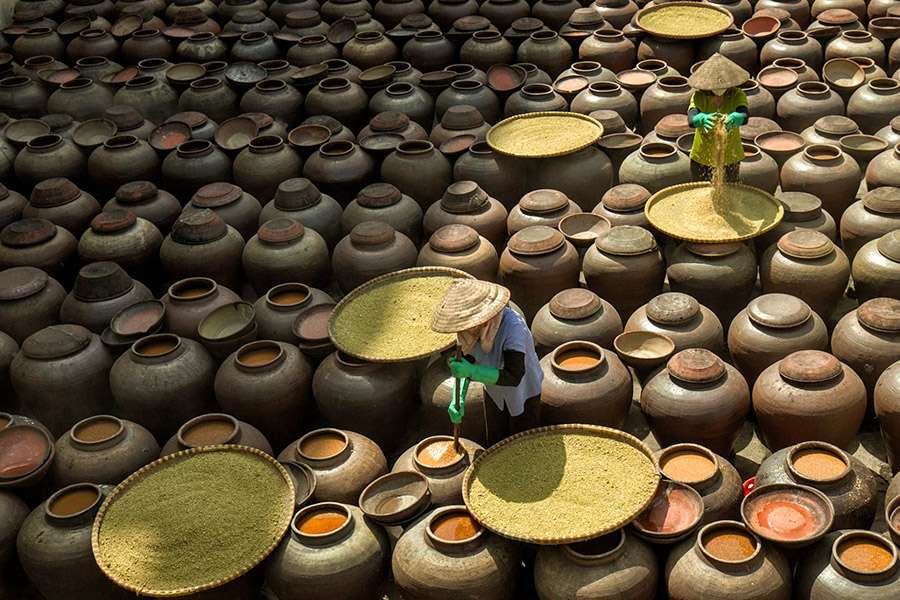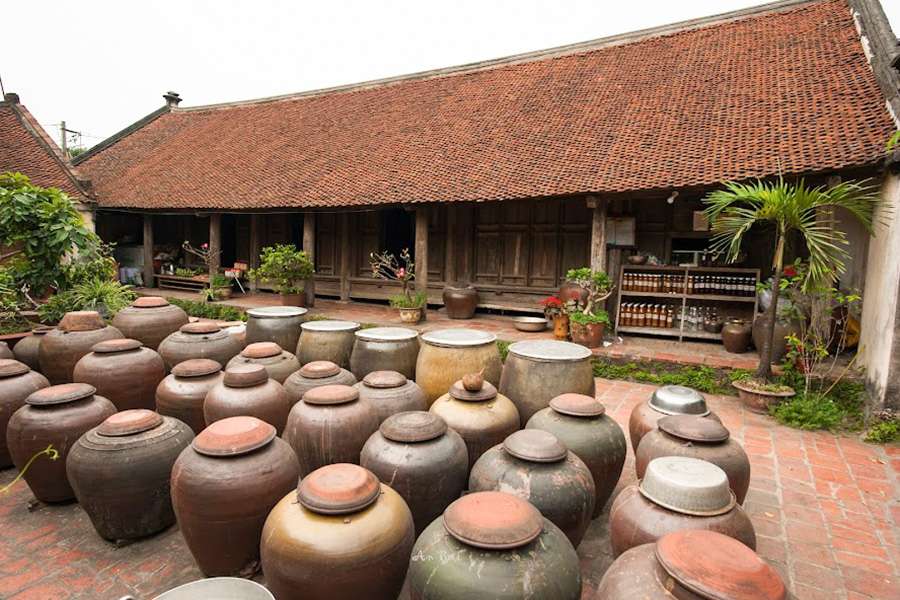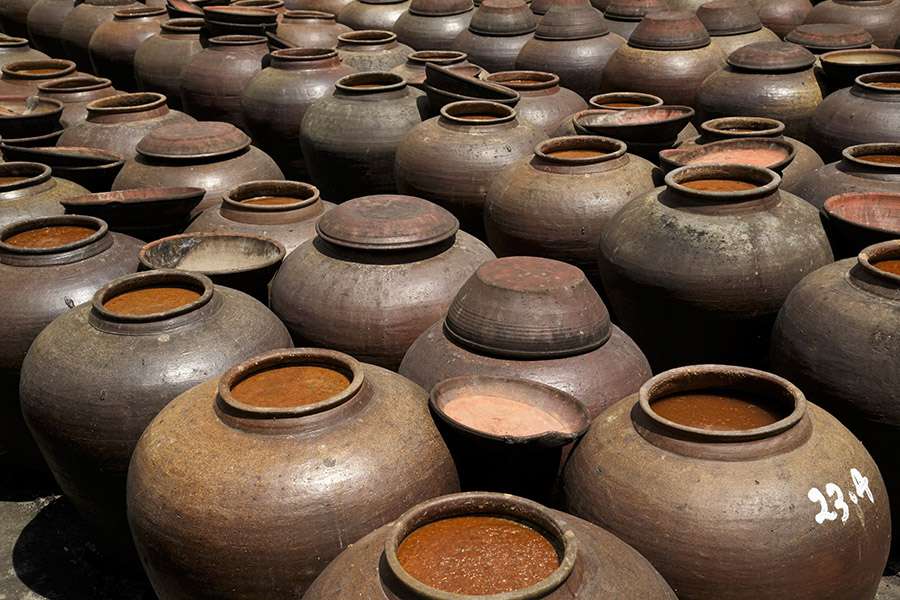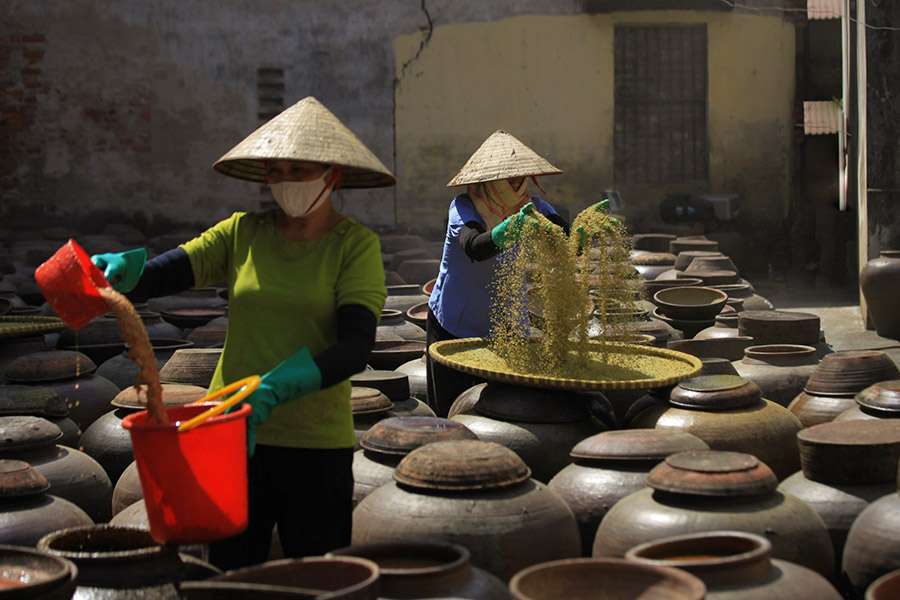No products in the cart.
Hanoi Villages
Ban Yen Nhan Village | Unique Traditional Soy Sauce Village
Discover the essence of Vietnamese culinary heritage at Ban Yen Nhan Soy Sauce Village, just a short 25km journey from Hanoi. This charming village is renowned for its traditional soy sauce making, offering visitors a glimpse into techniques passed down through generations. Join Hanoi tours to explore the sights, smells, and flavors of this cultural treasure, where every bottle of soy sauce embodies the craftsmanship and tradition of the region.
Where is Ban Yen Nhan?
Ban Yen Nhan soy sauce village is located in Ban Yen Nhan town, My Hao district, Hung Yen province, about 25km from Hanoi. Ban Yen Nhan soy sauce village has a strong development with a production capacity of 11 million liters per year, generating revenue of about 165 billion VND. This is also a craft village tourism area well-known in the Northern region.
Exploring Ban Yen Nhan Soy Sauce Village
This is one of the famous craft villages known for its traditional soy sauce making. Ban soy sauce, a specialty of the village, has been ranked as one of the must-buy specialties when traveling to the Northern region or Hanoi.
What Makes Ban Yen Nhan Soy Sauce Special?
Despite the rapid development and the emergence of new dishes, Ban Yen Nhan soy sauce remains an indispensable condiment on the dining table of many households in rural Northern Vietnam. Some jokingly say “Ban” means poor, so Ban soy sauce is dubbed as “poor household soy sauce.” In fact, this sauce was once used as a tribute to the kings. Over time, it has also become a source of pride for the people of Ban Yen Nhan town and is celebrated in poetry and music, with a sense of closeness and simplicity.
The ingredients for making Ban soy sauce include three main components:
Rice: For delicious soy sauce, the rice must be of the highest quality. That’s why people choose glutinous rice with golden flower buds.
Salt: It must be pure and clean salt.
Soybeans: Select local soybeans, the type with thin skin and golden seeds.
Although these ingredients are simple and easy to find, the cooking process is meticulous and time-consuming (about 1 – 2 months per batch of soy sauce). The ripening time of Ban soy sauce depends on favorable weather conditions, such as plenty of sunshine or lack thereof.
Learning the Process of Making Soy Sauce in Ban Yen Nhan
Soy sauce making in Ban Yen Nhan village has been passed down through generations for hundreds of years. The moment visitors step foot in this village, they are impressed by the aroma of soy sauce permeating the air, with rows of shops selling soy sauce and every household engaged in soy sauce making. All the soy sauce bottles here are produced by families in the village following the “from father to son” tradition.
The soy sauce cooking process is divided into three main stages:
Raising the rice mold: First, people soak the rice clean and cook it until it becomes a sticky paste. When the rice is cooked, it is spread out to cool, then left for 2 days and 2 nights until it turns golden, with a soft, cool texture. Some families are even skillful enough to ferment the rice in longan leaves to enhance its flavor.
Fermenting the soybeans: Roast the soybeans until they are cooked, then grind them finely and soak them in a glazed jar filled with water for 7 – 10 days. When the soybeans turn red-yellow, they are ready.
Fermenting the soy sauce: Take the soybean water from the jar and pour it evenly over the sticky rice mold, then leave it for another day and night. When the time is up, mix the rice with the soybeans in the jar, add pure salt, and stir well, then dry it in the sun for about a month. During this time, people must carefully monitor each jar of soy sauce daily.
Sunlight is a crucial factor in determining the excellent flavor of Ban soy sauce. The stronger the sunlight, the more mature and golden the sauce becomes. If there is not enough sunlight, the sauce will be lighter in color, less fragrant, and take longer to ferment. Therefore, the ideal time to make Ban soy sauce is during the summer.
To meet the “standard” of Ban Yen Nhan soy sauce, it must have a deep yellow color, a sticky texture, a rich sweet taste, and the rice grains should be soft. At this point, people bottle it, label it, and distribute it. Currently, in Ban Yen Nhan soy sauce village, there are about 300 workers who are preserving the traditional practices passed down by their ancestors. However, with the development of technology, people in the village have applied various machinery and equipment to increase the productivity and quality of this renowned condiment.




